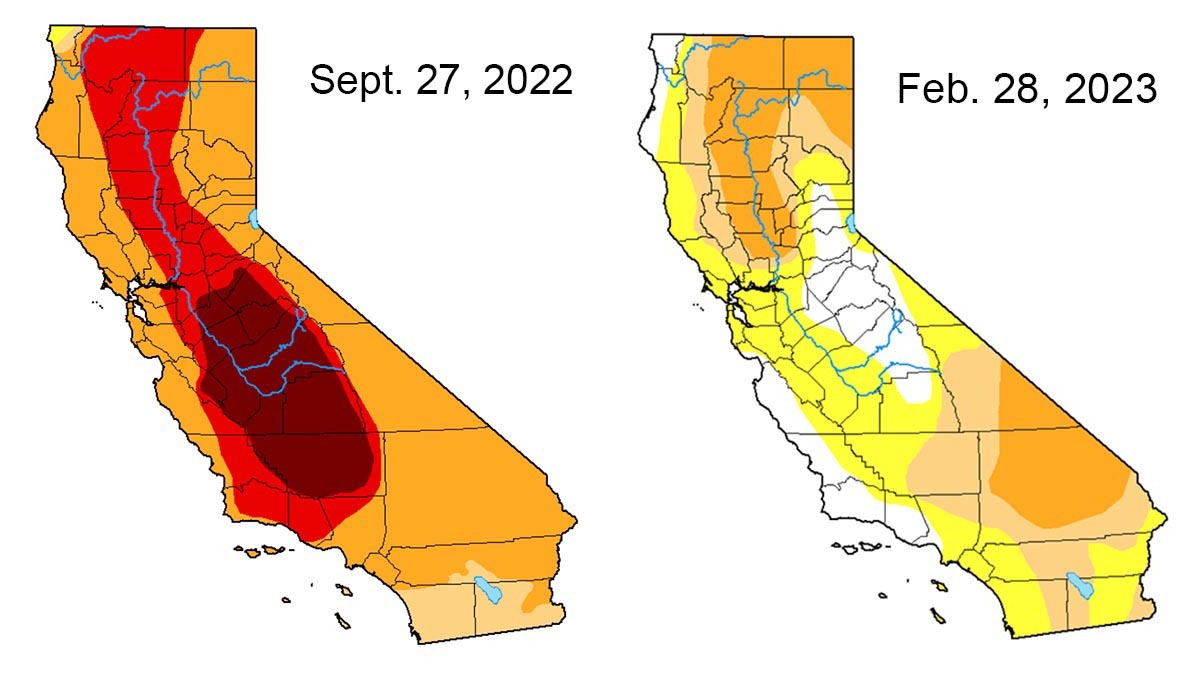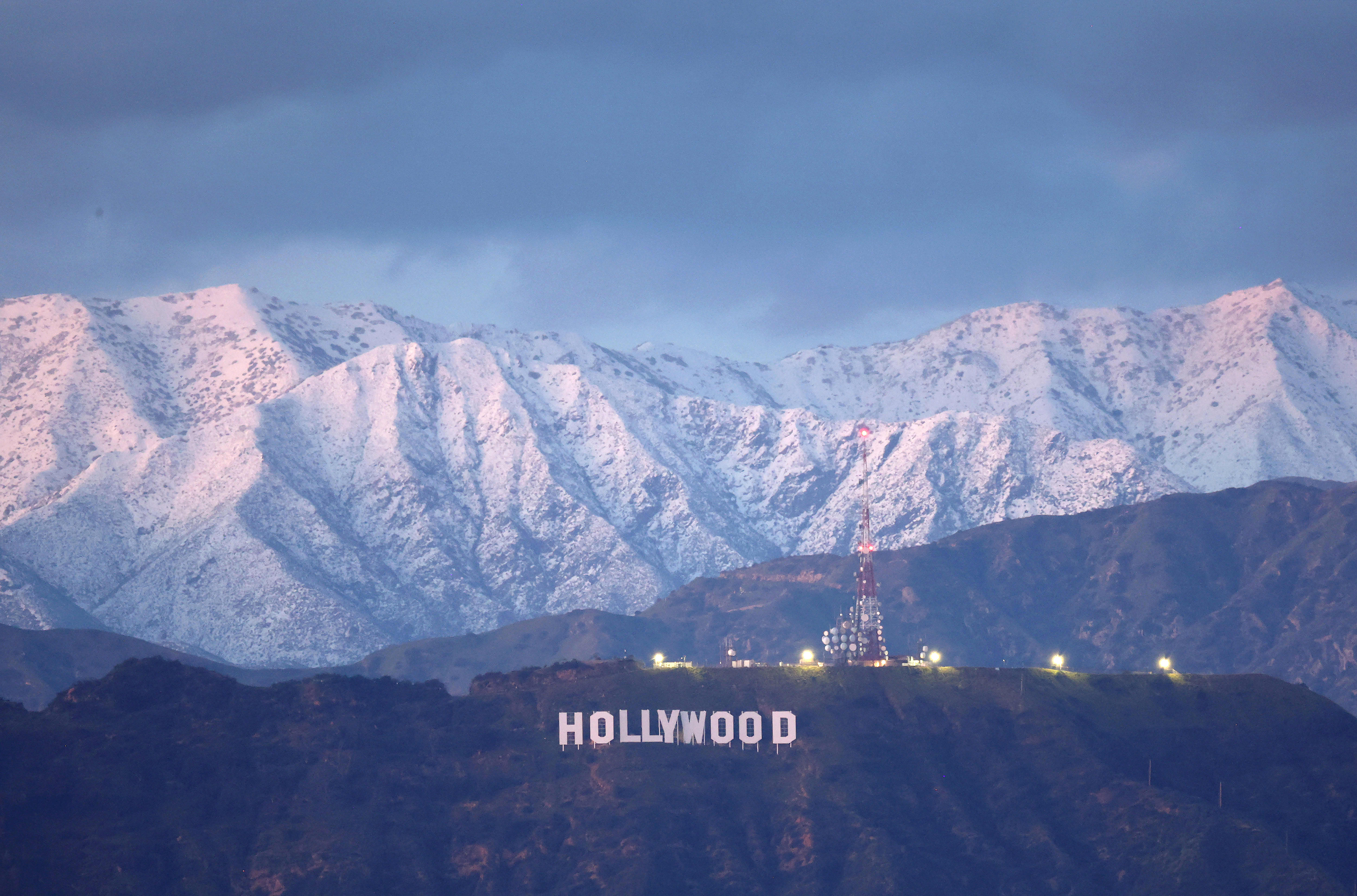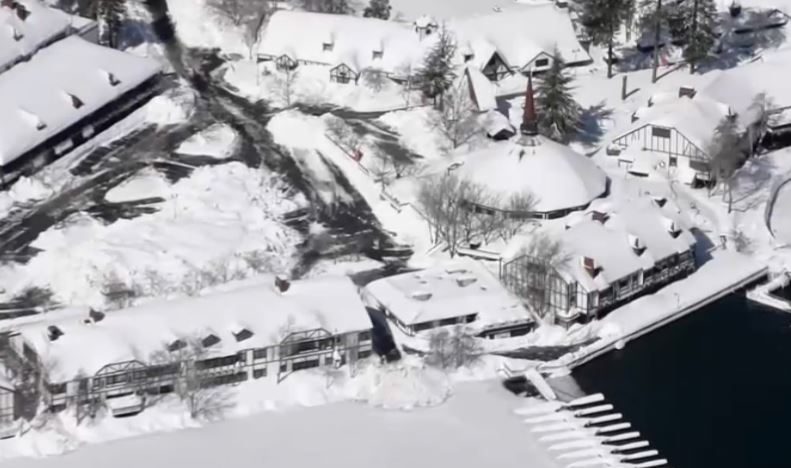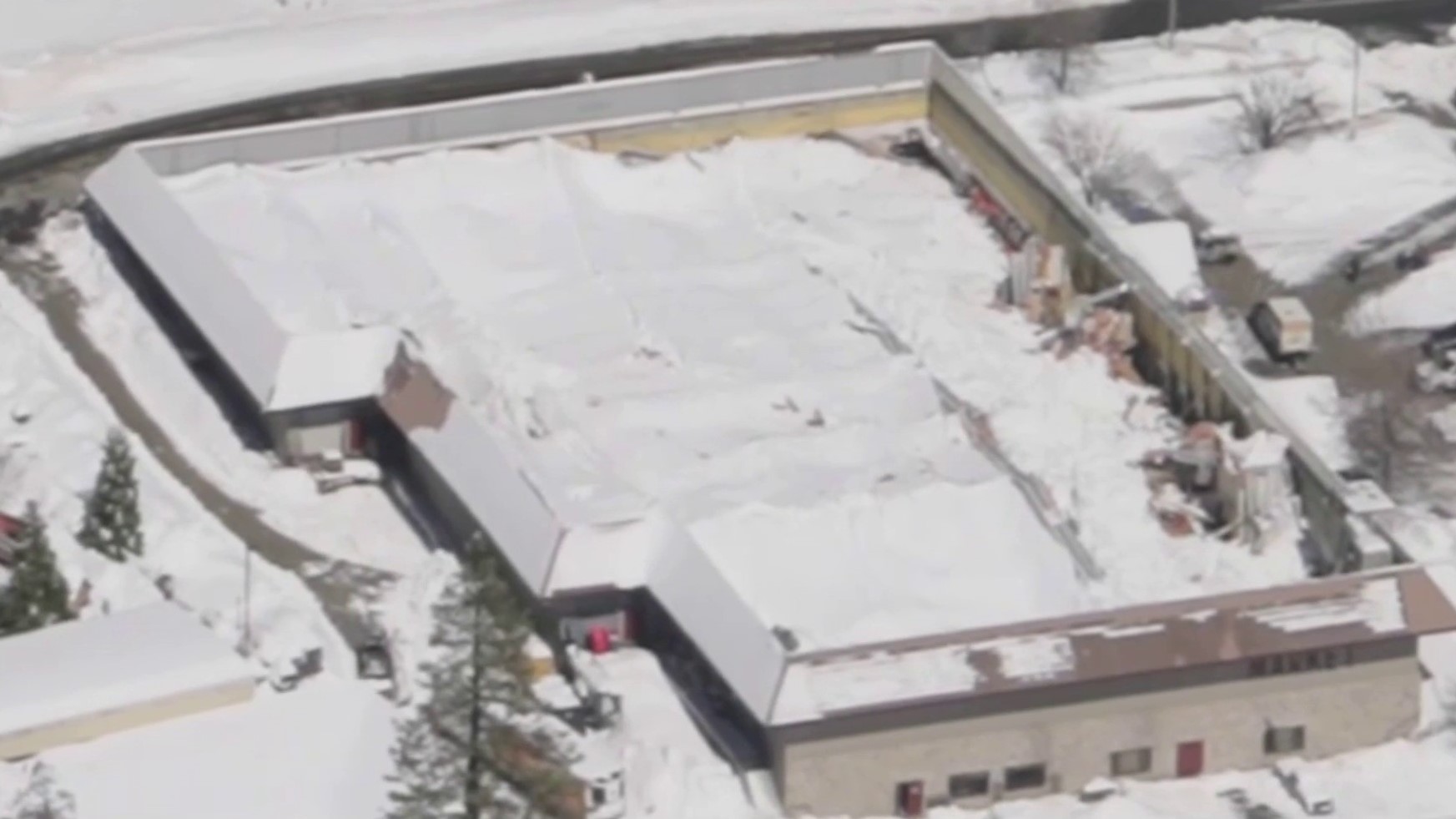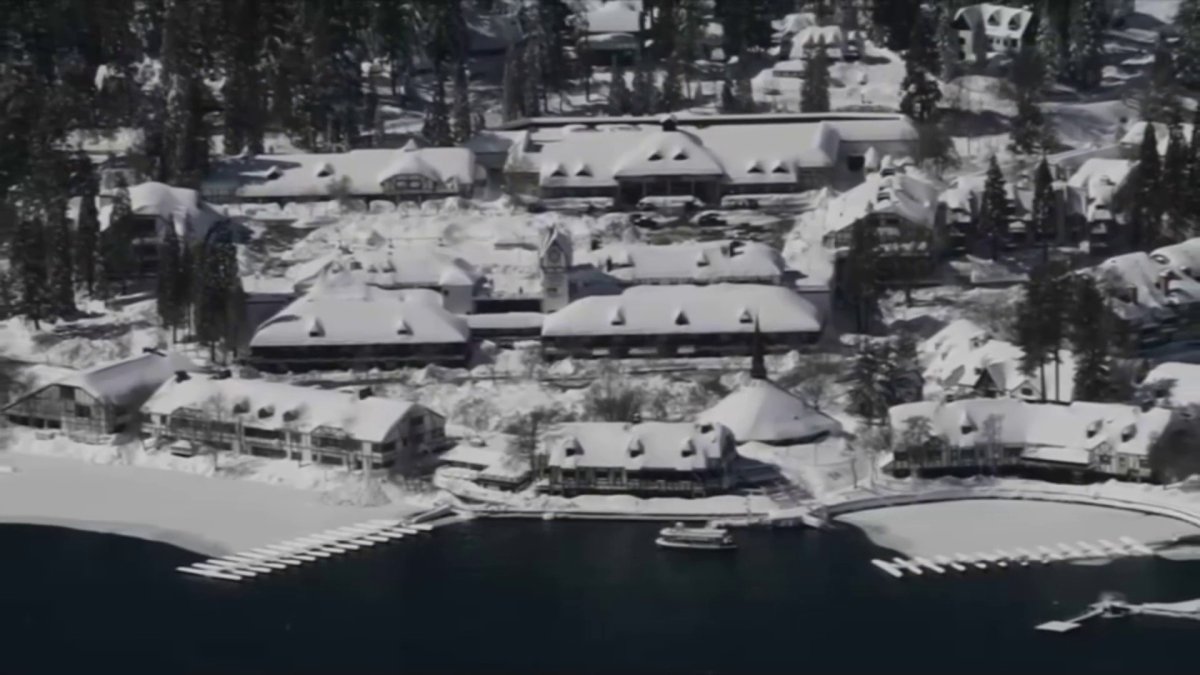
A series of winter storms delivered snow that piled up to rooftops this week in the San Bernardino County mountain community of Lake Arrowhead.
A series of winter storms delivered snow that piled up to rooftops this week in the San Bernardino County mountain community of Lake Arrowhead.
The community about 80 miles northeast of Los Angeles is one of many digging out from the historic snowfall. At Lake Arrowhead Village, snowbanks surrounded a block of stores. Plow crews cleared a parking lot at a Stater Bros., one of the few places in the area where residents can stock up on supplies.
Lake Arrowhead received an estimated 109 inches of total snow accumulation during the recent storms.
Get top local stories in Southern California delivered to you every morning. Sign up for NBC LA's News Headlines newsletter.
Crews are working around the clock to plow roads in San Bernardino County, but it could take more than a week to reach some areas, said Dawn Rowe, chair of the county’s board of supervisors. Residents are dealing with as much as 7 feet of snow, and sheriffs’ authorities have conducted 17 rescue operations to help off-roaders and skiers.
Emergency crews are trying to reach residents who need assistance, such as medicine.
National Guard crews from Fresno were expected to arrive Thursday. Crews from Caltrans and Cal Fire with high-clearance vehicles arrived overnight.
Gov. Gavin Newsom on Wednesday proclaimed a state of emergency in San Bernardino and 12 other counties to support disaster relief by making state agencies and aid available and asking for federal help in clearing and repairing highways. The governor announced that the state was bringing in more snow plows and road crews to help clear roads and he authorized the California National Guard to mobilize for disaster response if needed.
In Crestline, the entire roof of Goodwin and Sons Market collapsed Wednesday as safety inspectors were onsite checking up on reported damage. Officials raced to salvage food that residents sorely need from its shelves.
Rowe said no one was injured.
“We know that roofs are starting to collapse,” she said. “There are other businesses that will likely be affected by the weight of the snow.”
The county has set up a hotline for residents dealing with issues like frozen pipes, roof problems and food shortages. The San Bernardino Mountains are a major tourism and recreation destination but also home to a large year-round population in small cities and communities around lakes and scattered along winding roads. About 80,000 people live either part- or full-time in the communities affected, said David Wert, a county spokesman.
Reprieve was on the way as the mountain community continued to dig out, with much of California expecting drier weather on Thursday. A key mountain section of Interstate 5, a major north-south highway, reopened Wednesday afternoon following closures due to snowy conditions, while blizzard warnings expired in the Sierra Nevada further north.
Anthony Cimino, a 51-year-old retiree, said he’s been snowed in for about a week in the mountain community of Running Springs. He finally managed to clear his decks, but not for long.
“I woke up this morning and there was another two-and-a-half feet on them,” he said. “It was kind of like Groundhog Day.”
Residents of these towns are grappling with so much snow they're running out of space to put it; clearing one area adds heaps to another. Grocery shelves had run bare of some items, like bread, and were running low on eggs and milk Tuesday. Cars remained buried under snow and roads closed.
At David and Kelli Góra's home in Big Bear Lake, the snow on the roof is now touching the snow on the ground. They shoveled a small area to let their dogs go outside, but are mostly hunkered down.
“We’ve been through some big storms … but this is just unreal,” David Góra said. “I’ve never seen anything like it anywhere.”
Over the past week, historic snowfall, ice and cold temperatures brought much of Portland, Oregon, to a standstill, trapping drivers on roads and highways, paralyzing government services and leading to at least two suspected hypothermia deaths.


